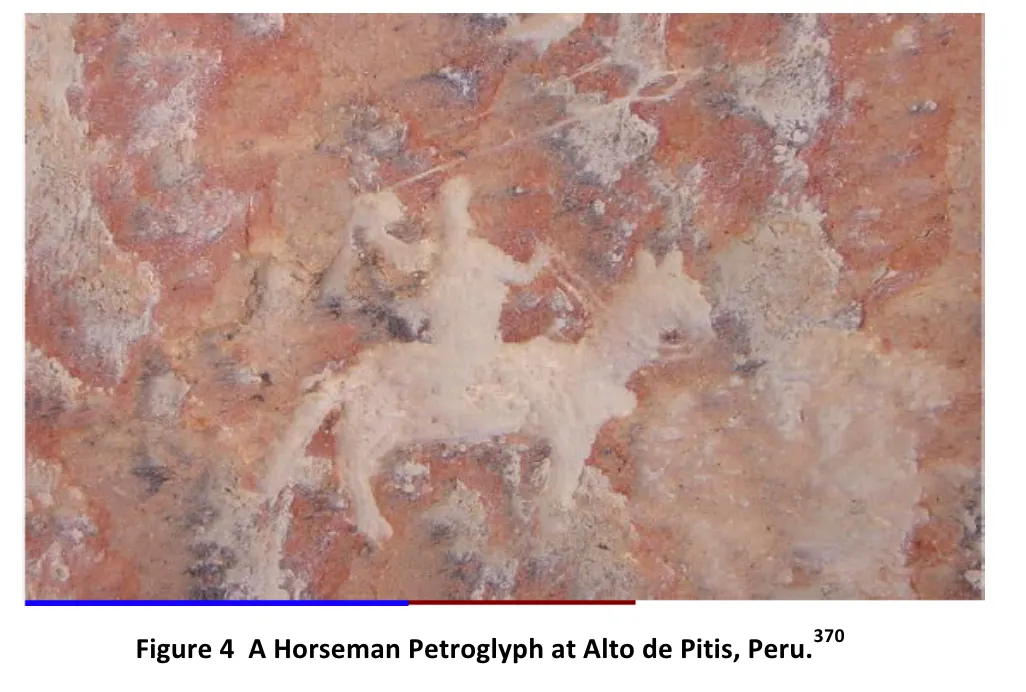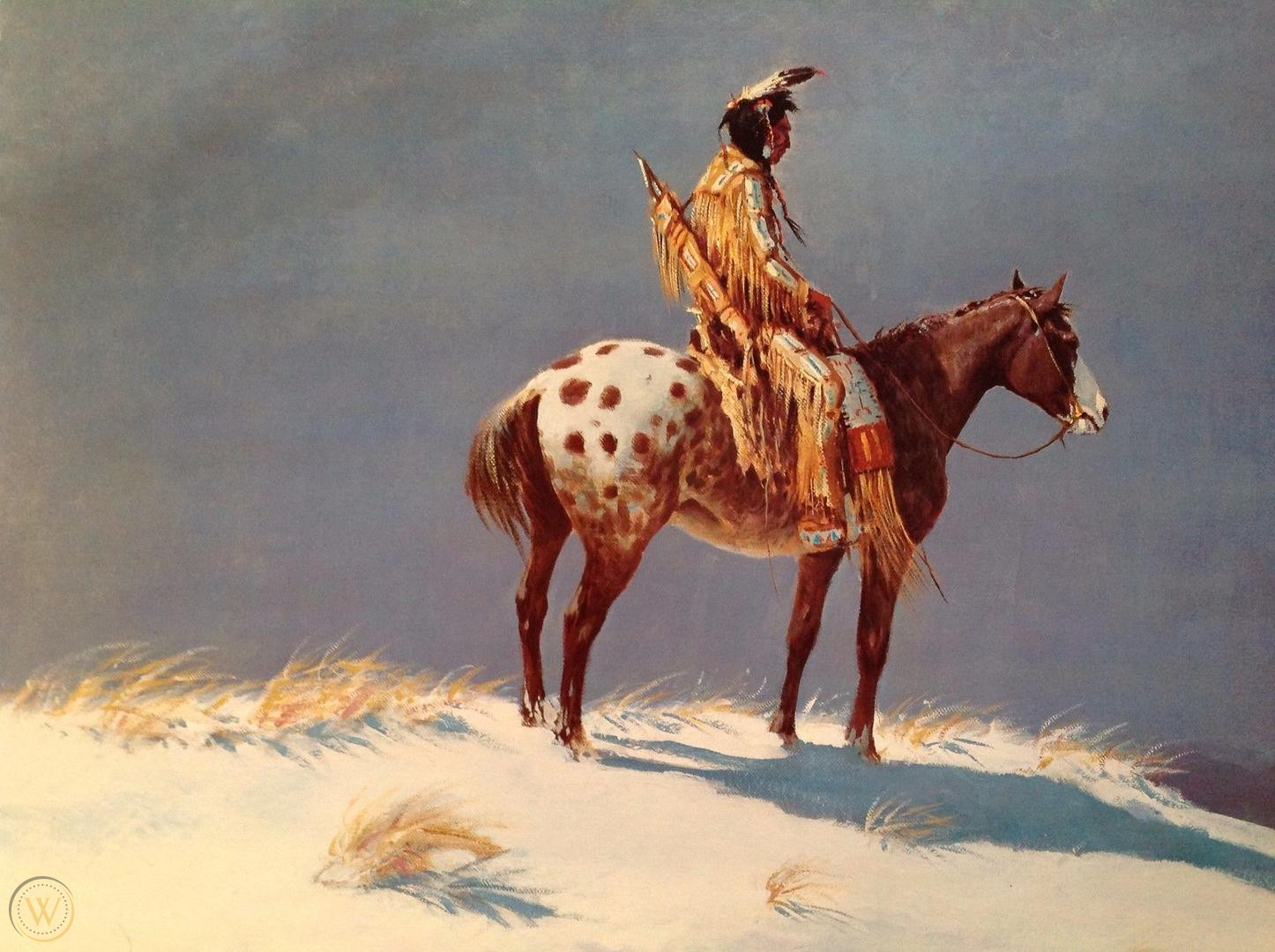Most people think horses have always been in America. They see the Westerns with Indians riding bareback and assume the stallions were likewise indigenous, but there is no record of horses still being around when the Spanish arrived in the Americas in the early 16th century. Equus scotti breathed its last breath on the American continent roughly 10,000 years ago, along with other mythical creatures like the saber-tooth tiger and mastodon. Unlike the buffalo, they were not able to survive the Ice Age.
Nevertheless, it doesn't stop the memes and other conflicting accounts of horses being here long before the Spanish arrived. Pre-Columbian horse effigies and other ritualistic images have been found that suggest horses or horse-like creatures have long been a part of native culture for millennia. However, DNA evidence suggests that the horses we see in America today, roughly 19 million, were all derived from the early Spanish stock.
I suppose some argument could be made that if this DNA evidence was stretched back even further that the origin of horses was on the American continent. At one time, it was fairly easy to cross between Asia and America via the Bering Land Bridge, leading to a massive cross-pollination of flora and fauna. This is when the Athabascans are believed to have first come to the Americas from Mongolia about 11,000 years ago. There would have been horses at the time, and these natives obviously would have come in contact with them, but most accounts suggest they hunted them for food, not rode them to hunt for food.
However, the horse has become such an integral part of Plains Indian culture that it is hard not to believe they always had them. This is certainly true among the Plains Indians, who have gone out of their way to stake claims to having had horses long before the Spanish arrived. Yvette Running Horse Collin believes this ancient history has been purposely distorted to satisfy the Western bias that native cultures were uncivilized and therefor conquest was justified.
This theory doesn't hold much water though, as Cortez was notably impressed with the Aztec civilization. In all his encounters throughout Mexico, he didn't come across any horses other than his own. Instead, he saw great pyramids, road and drainage systems that surpassed anything he had seen in Europe. So, this idea that the Spanish looked down on the Meso-Americans is false. They did however insist on imposing their Christian values on them, along with their new viruses, which led to the rapid decline of these once formidable cultures in America.
I would think that if horses were widespread throughout the Americas, as Collin asserts, such a highly advanced culture like the Aztecs would have utilized this fantastic beast. There is no record of horses among the Mound Builders and Pueblo Indians of North America as well, which predated the Aztecs. It seems that Collin is stretching her thesis very thin here, relying on a handful of effigies to make her case for horses proliferating the continents. For all we know, it was a llama that the ancient Peruvian artist was depicting.
Native Americans have had more than 500 years to breed their own unique equine varieties since the Spanish arrived, resulting in some unusual breeds like the Curly Horse, which Collin believes is a direct descendent of the Russian Bashkir horse. However, th modern day curly horse is quite young, with the first known spotting in 1898, and most likely the product of interbreeding in the Americas.
Another breed associated with native culture is the Appaloosa. The Nez Perce appropriated the initial spotted horses from the Spanish and began breeding them as early as the 17th century. This magnificent mottled beast became their signature horse. No surprise modern day descendants of the Nez Perce like to claim a much earlier ancestry, as these horses do indeed bear some resemblance to the Equus scotti.
The thing is none of it really matters. No one is begrudging the Native American love of horses. In fact, it is greatly admired. The romantic image of a Plains Indian on horseback has captivated people worldwide. Buffalo Bill Cody featured them in his Wild West shows in America and Europe. This is why most Europeans can't believe horses aren't indigenous to the Americas.
However, the purpose of anthropology and archeology isn't to verify myths but rather than to uncover the real nature of earlier cultures. As close as we can anyway. It seems Yvette Running Horse Collin's ultimate aim is to have horses protected by the Indigenous Species Act of Canada so that wild horses won't be run down and slaughtered for commercial purposes. A noble aim but I don't think the evidence supports her argument and that she should find another way to protect these magnificent creatures.



Comments
Post a Comment